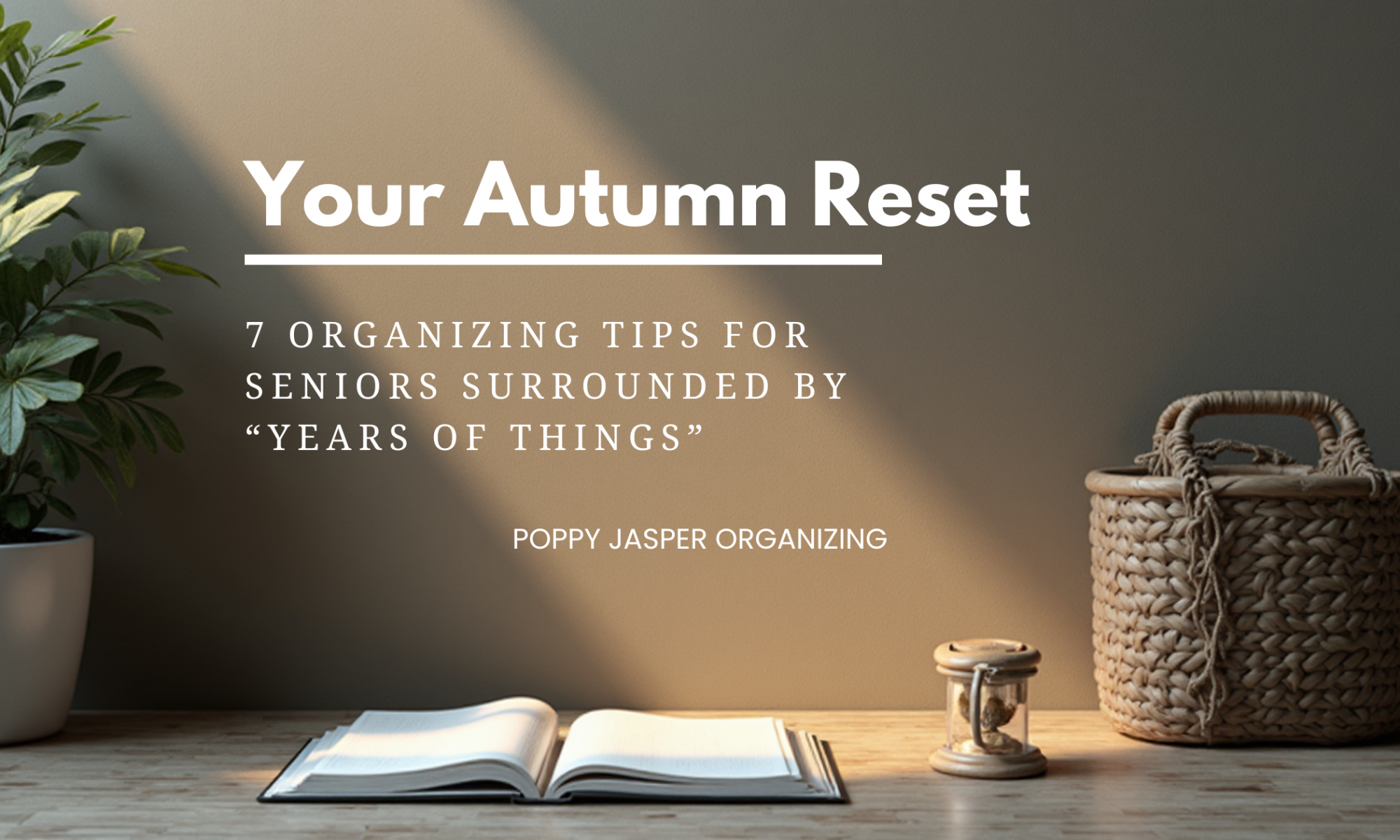A Season for Fresh Starts
Fall is nature’s reminder that letting go can be beautiful. The trees release their leaves not in sadness, but in preparation — making space for rest, renewal, and growth. For many seniors, that same idea applies to our homes.
Over the years, we gather layers of life: holiday decorations, children’s keepsakes, inherited dishes, old furniture, and the things that once fit “someday plans.” But eventually, these belongings can start to feel heavy — emotionally and physically.
If your home holds a lifetime of memories (and boxes), you’re not alone. This season, give yourself permission to reset, simplify, and create space for comfort, safety, and peace of mind.
Here are seven gentle organizing tips to help you begin.
- Start with a Story, Not a Stuff-Pile
Before you pick up a single box, take a few minutes to reflect on the story behind your things. Maybe the china belonged to your mother, or the books remind you of cozy nights with your kids. Recognize that it’s not “just stuff” — it’s part of your story.
Then ask: Do I need the item itself to keep the memory, or can I honor it in a different way?
A photo, a short note in a memory box, or a single saved piece from a set can preserve the story without keeping everything.
2. Create a “One Space at a Time” Rule
It’s easy to look around and feel overwhelmed — especially when every room holds years of belongings. The key is to go one space at a time.
Start with the area that’s really annoying you the most right now & is impacting your daily life: a kitchen counter, your favorite chair, or the entryway. Each small success will give you momentum to move forward.
3. Sort with Kindness — Not Judgment
When sorting through decades of things, emotions often surface: guilt, sadness, & even pressure from family. Inherited items shouldn’t feel like a ball and chain on your emotions. Instead of focusing on what’s gone, focus on what’s being kept and cherished.
Create three simple piles:
- Keep: items you use or love often
- Share: meaningful things to pass down or donate
- Release: items that have served their purpose
Remember — letting go doesn’t erase the love or the memories. It simply makes room for what matters most now.
4. Set Up a “Memory Box” for Special Keepsakes
You don’t need to part with every sentimental item. A memory box is a simple, beautiful way to preserve what you truly treasure. Choose a box that fits neatly on a shelf or in a closet and fill it with a few favorite photos, letters, small heirlooms, or keepsakes that make you smile.
When your space feels lighter, those items will shine even brighter.
5. Make It Safer and Simpler
Many seniors hold onto furniture, decorations, or stacks of boxes that make walking paths tight or cluttered. Use this fall as a time to rethink your layout for both safety and ease.
- Remove tripping hazards like small rugs or boxes.
- Keep daily-use items (like dishes or medications) within easy reach.
- Use sturdy, labeled bins for storage rather than flimsy bags. Not even the best-looking fabric bags look as good as a linen bin with a lid on top. And a clear floor is more than tidy — it’s peace of mind.
6. Give Your Heirlooms a Future
If you’ve been the “keeper” of your family’s things — china, linens, photographs, or furniture — consider passing them along now, while you can share the stories behind them.
Call a family member, invite them for tea, and tell them the history of a piece before gifting it. And don’t be offended if they don’t want Great Aunt Margaret’s linens.
Even if they don’t take everything (or anything), you’ll feel a sense of relief knowing you’ve honored the past with love and intention.
7. Keep What Loves You Back
At the end of the day, the most important organizing tip is simple: keep what loves you back. Surround yourself with the things that make you feel comfortable, supported, and proud of your space. Let go of the rest — without guilt. Your home should serve you, not the other way around.
Closing Thought: A Gentle Autumn Reminder
Just as the trees release their leaves, you too can let go of what’s weighing you down. Each drawer cleared, each shelf sorted, is a quiet act of self-care — one that brings comfort, safety, and dignity to your daily life.
This season, don’t strive for perfection. Strive for peace.
Ready to lighten your home — and your heart? Contact me today.
Happy Autumn! ~Tami










